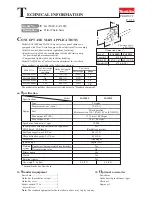
-7-
Assembly
Preparing the Saw
BLADE SELECTION
No one blade can be efficient on all cutting
jobs. Different materials require specially
designed blades. Since your reciprocating saw
can cut so many materials, many types of SKIL
blades are available. Be sure to use the proper
blade to insure proper cutting performance.
INSTALLING A BLADE
Unplug tool from power
source before changing blade
or making any adjustments.
INSTALLING A BLADE
Simply press the release lever forward to
open the tool-less clamp; insert the blade until
it stops and release the lever (Fig. 2). The
spring-loaded mechanism will lock the clamp
against the blade (Fig. 3). Push in and pull out
on the blade to be sure the pin in the clamp
housing goes through the hole in the blade to
hold the blade securely. The blade may be
inserted with the teeth facing down or up.
Make sure that the front end
of the blade extends through
the footplate for the entire stroke length. Do
not use specialty blades that are very short or
those with a significant cant. Blade must not
contact footplate. A blade which is too short or
canted could jam inside the foot and snap.
!
WARNING
FIG. 2
!
WARNING
FIG. 3
POWER INDICATOR LIGHT
When you plug your tool into the power
source, the power indicator light will go “ON”
indicating the tool is receiving power (Fig. 1).
TRIGGER "ON-OFF" SWITCH
TO TURN THE TOOL "ON" squeeze the
trigger switch. TO TURN THE TOOL "OFF",
release the trigger switch, which is spring
loaded and will return to the "OFF" position
automatically (Fig. 1).
VARIABLE SPEED DIAL
Your tool is equipped with a variable speed
dial. The blade stroke rate may be adjusted
during cutting operation by presetting the dial
on or between any one of the six numbers
(Fig. 1).
Setting
SPM rating (strokes per minute)
1-2
Low stroke
3-4
Medium stroke
5-6
High stroke
Higher speed settings are generally used for
fast cutting or when softer cutting materials
such as wood, composite materials, and
plastics. Slower speed settings are generally
used when precision is required or when
cutting harder materials. Materials typically cut
using slower speeds include sheet metal,
conduit, and pipe.
Operating Instructions
SM 2610001755 07-08 7/14/08 9:41 AM Page 7








































